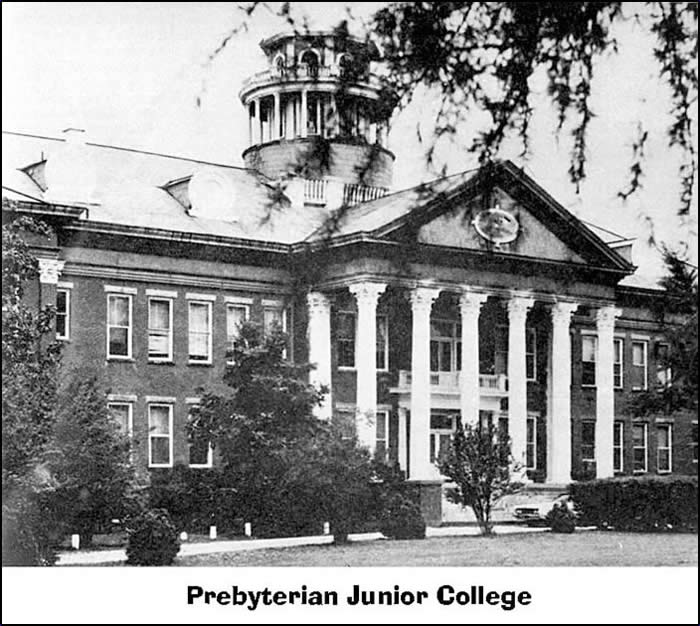See also: Elise Academy and High School; Flora MacDonald College.

St. Andrews University, formerly known as St. Andrews Presbyterian College, is located in Laurinburg. It was preceded by a number of institutions with ties to the Presbyterian Church. They include Donaldson Academy and Labor School, which was founded in Fayetteville in 1833 and existed in some capacity until 1883; Floral College; and Flora MacDonald College, previously called Red Springs Seminary (1896-1903) and Southern Presbyterian College and Conservatory of Music (1903-14). Other predecessors to St. Andrews included Elise Academy in Robbins, which came under the jurisdiction of the Fayetteville Presbytery in 1904 and remained open until 1940; and Presbyterian Junior College for Men (1929), an offshoot of Elise Academy located at Maxton.
Flora MacDonald and Presbyterian Junior College merged in 1958 to form what would become St. Andrews Presbyterian College, named for the University of St. Andrews (founded in 1411), the premier Christian university of Scotland. The new institution, briefly called the Consolidated Presbyterian College, was situated on 800 acres of land south of Laurinburg. St. Andrews formally opened in 1961 and soon acquired a reputation for innovative curricula and facilities. Its Christianity and Culture Program included courses in European history, non-Western cultures, American studies, and futurism. The late 1970s witnessed the implementation of the St. Andrews General Education Program, which sought to integrate elements of the Christianity and Culture Program with more consideration of world affairs. The college augmented its preprofessional offerings as well as majors in business administration, mathematics, natural sciences, and psychology. In 1978 the North Carolina Department of Public Instruction designated St. Andrews as the campus for the Governor's School East.
In 1985 St. Andrews began conducting overseas programs in Beijing, China; Cuenca, Ecuador; and Brunnenburg Castle, Italy; the school also has exchange arrangements with Kansai Gaidai University in Japan and Han Nam University in Korea. In 1989 the Scottish Heritage Center was established in the school's DeTamble Library. In the early 2000s curricular offerings included Equine Business Management and Therapeutic Riding. Enrollment was approximately 700 students served by 83 faculty members. The college boasts an award-winning pipe band, a four-time national champion equestrian team, and St. Andrews College Press, the first undergraduate college press in the country.
St. Andrews Presbyterian College changed its name to St. Andrews University in 2011, coinciding with the 50th anniversary of the college's opening in 1961.
In April 2025, Dr. Nelson Marquez, President and CEO of Webber International University (of which St. Andrews was a branch institution), announced that St. Andrews University would cease operations after the Spring 2025 semester and close on May 5, 2025. The decision came after much debate among stakeholders. The following was shared as part of Marquez's statement: For many years, St. Andrews has worked diligently to balance affordability, student experience, and academic quality. Despite these efforts and the steadfast dedication of its faculty, staff, students, and alumni, the financial realities of maintaining operations in Laurinburg have become unsustainable.